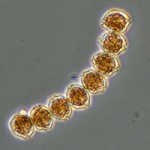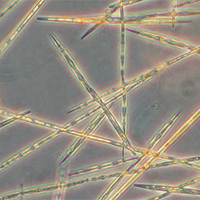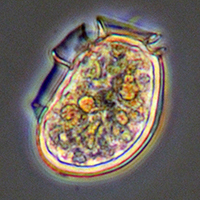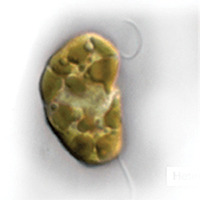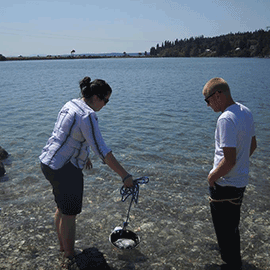Harmful Algal Blooms
Several species of single-celled algae growing in Washington produce potent toxins that can poison marine animals or become concentrated in shellfish and sicken, even kill, humans who eat them. Even when they don’t harm humans, toxic blooms can force costly shutdowns of wild and cultivated shellfish harvests. Unfortunately, thanks in part to warming waters, harmful algae have expanded into new habitats and extended their blooming seasons. And, blooms are becoming more severe.
Washington Sea Grant (WSG) educates shellfish gatherers, shoreline dwellers, and other citizens about harmful blooms. We manage the SoundToxins program, a network of trained monitors who regularly test vulnerable waters for dangerous species of algae.
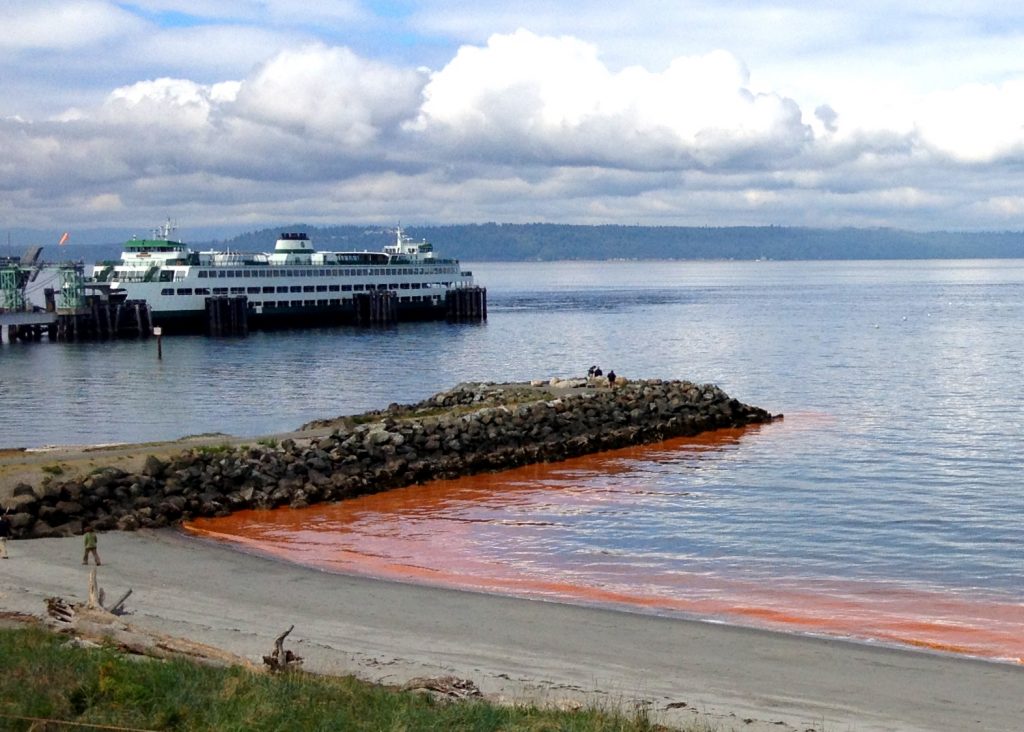
Red-orange algae bloom seen near Edmonds. Photo: Jeri Cusimano
